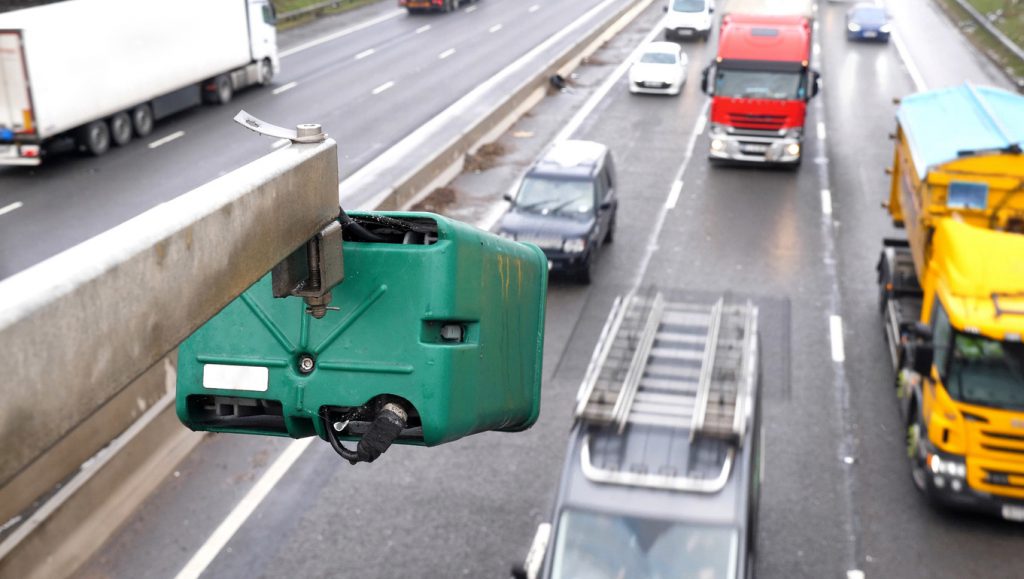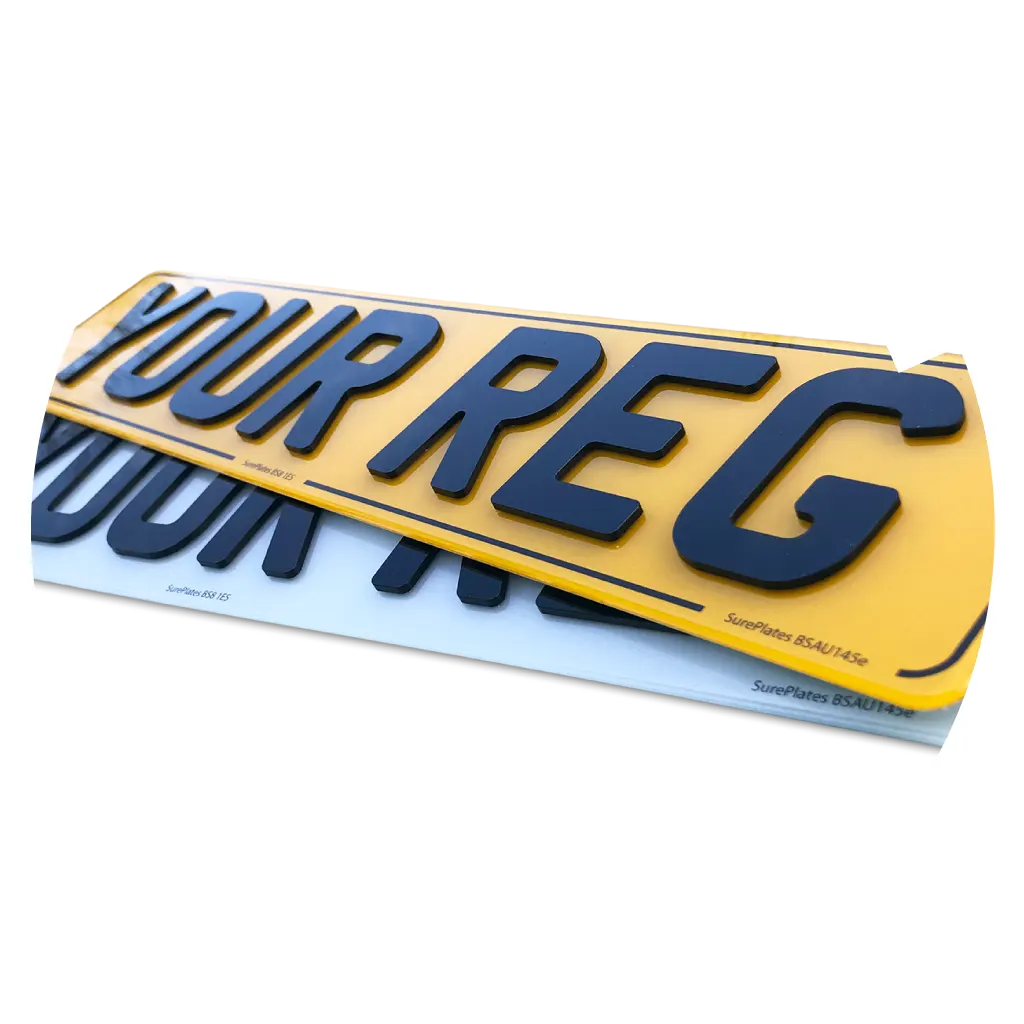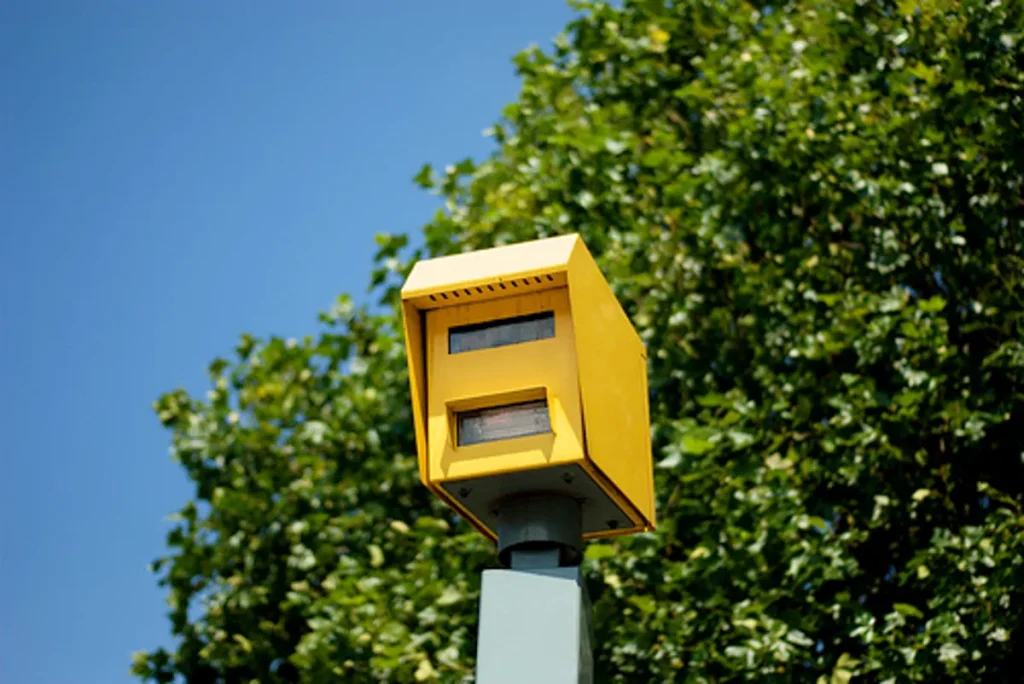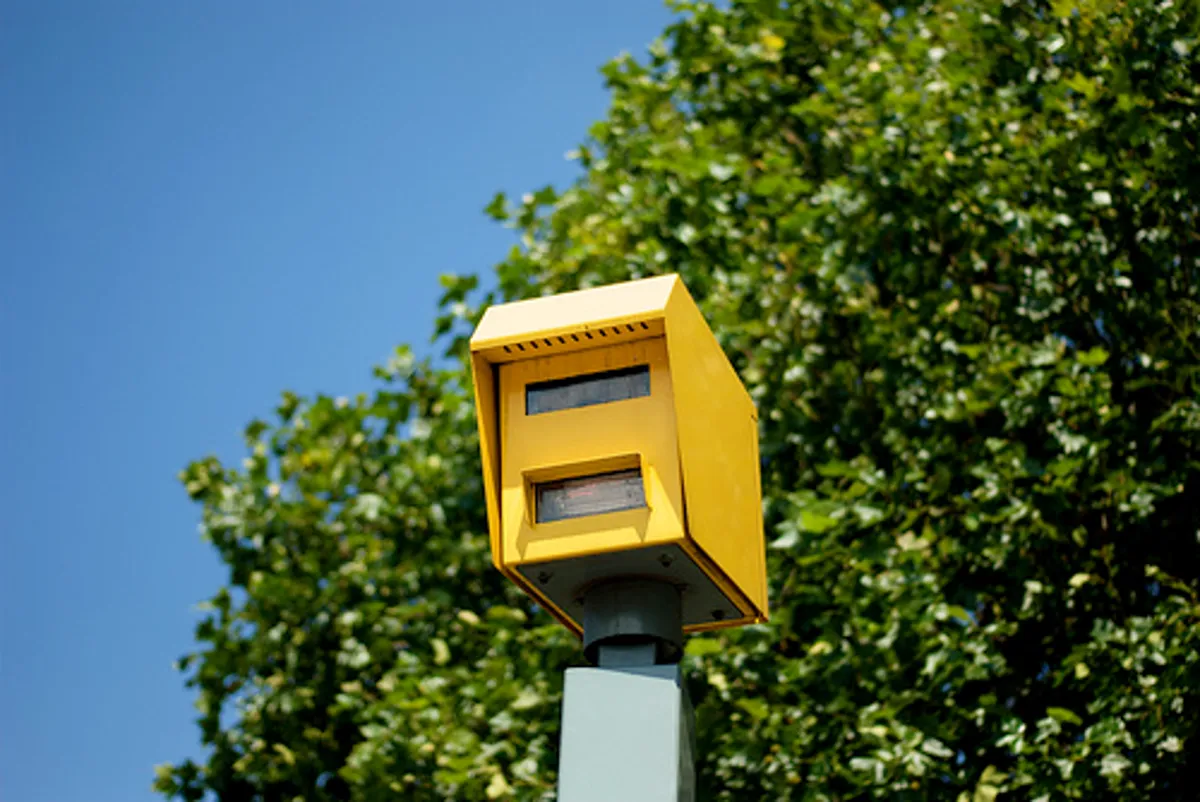You see them all over the place – cameras watching the roads or scanning the entrances to car parks. These systems are deployed in a wide variety of places and can be used for lots of different types of monitoring. ANPR (Automatic Number Plate Recognition) is a technology used across the world, and it was invented here in the UK.

How do ANPR systems work for number plates?
ANPR systems, broadly speaking, all work the same way.
- A camera will take a photograph of the vehicle’s plates.
- Some software detects the registration number.
- Another software system does something with the information – i.e., performs a database lookup or generates a speeding ticket.
Some other names for the technology include ALPR (Automatic License Plate Recognition), AVI (Automatic Vehicle Identification), or LPR (License Plate Recognition), depending on where you are.
What technology is used in ANPR systems?
Camera
The camera is the first part of the system. ANPR systems typically use infrared cameras due to their versatility. Infrared cameras can be used during both day and night, while visible light cameras can only be used in daylight unless the area being monitored is brightly lit.
High shutter speeds are needed for most ANPR cameras because they need to be able to capture an image of a vehicle moving at high speeds. Shutter speeds of up to 1/1000 of a second are typical. For reference, shutter speeds of 1/500 of a second can capture vehicles moving at 40 mph (~ 65 kph).
Optical Character Recognition
Once the camera has taken a photograph of the vehicle, a piece of software will attempt to read the registration marks. This is where an optical character recognition (OCR) system comes in to play. OCR systems broadly follow these steps:
- Find and isolate the plate within the photo.
- Adjust the brightness and contrast of the image to make the characters highly contrasting to the background.
- Segment the characters into a grid.
- “read” each character using an algorithm.
Additional software
Once the OCR algorithm has read your plate, it needs to do something with the data. This could be something as simple as performing a database lookup to check if the vehicle is taxed, or keeping count of vehicles on a particular road.
Whatever purpose the camera operator has, software behind the scenes will be controlling connections to databases and other systems to do something useful with the information.
Customise your 4D number plates
Build unique number plates with our intuitive and fully interactive number plate builder.
Build Your 4D Plates
History of number plate recognition
You may think the implementation of ANPR systems is a recent innovation because of the proliferation of CCTV and internet connectivity, but you’d be wrong. ANPR was created by the Police Scientific Development Branch (PSDB) in 1976 and was first used in 1979.
Camera systems were first used on the A1 and the Dartford Tunnel crossing (M25). The first arrest that can be directly attributed to an ANPR camera was in 1981 when a stolen car was detected.
In 1993 the City of London had deployed the “Ring of Steel”, now known as The Traffic and Environmental Zone. It was implemented by the London Metropolitan Police.
By 1997 further extensions to ANPR systems were made. The Police National ANPR Data Centre was created to supplement the Police National Computer Service. Before this, ANPR data was only available on local ANPR systems controlled by the local police. The National ANPR Data Centre made it possible for data to be shared by police forces nationwide.
In 2003, a congestion charge scheme was deployed in London to reduce traffic volumes in the city. Transport for London operates a system of 700 cameras and covers every road within the 20 square kilometre congestion zone.
In the years following, many systems were deployed in several arenas including car park and traffic monitoring.
Types of ANPR systems – number plates, speeding, and more
Automatic detection of your vehicle’s registration marks isn’t just used for generating speeding fines, but can actually be very useful. Here are just a few ways ANPR systems can be used:
Traffic monitoring and motorway management
Highways England operates over 1,100 cameras in more than 500 locations across the UK to manage traffic on the roads. Some applications include:
- Speed cameras and average speed cameras.
- Checking for stolen, uninsured, or untaxed vehicles, and vehicles without an MOT.
- Monitoring traffic flow and volume.
- Monitoring bus lanes.
- Toll roads.
- Calculating traffic journey times.
Security access and car parks
Many private companies deploy ANPR systems to control who can access their property. Many car parks are barrier-controlled with cameras that read your plates on the way in. The exit barrier will only open once the parking fee has been paid and your plates cleared for exit.
Fast food chains will often issue fines to customers who stay too long in their car parks.

Can you block ANPR cameras from reading your plates?
It is possible to modify your number plates so they can defeat certain technologies from automatically reading your registration number. Such plates are known as “stealth plates” and are illegal. Depending on the camera system, there are a variety of methods capable of blocking ANPR technology.
Block infrared light
It is possible to block infrared light by applying infrared-blocking coatings to your number plates. Blocking infrared light prevents a high-contrast photograph from being taken and disrupts the system’s ability to detect the characters. Such coatings do not block visible light cameras.
Over-expose the camera with LEDs
Some people install very bright LED strips above or below their plates to try to overexpose the camera sensor. This can be prevented by the camera operator by adjusting the camera’s white balance and other settings.
Reflective characters
Another possible way to defeat infrared cameras is to use a number plate with reflective characters. A reflective character would reduce the contrast between the plate and the character making it difficult for the OCR system to read anything. How to make them reflective is another matter, which we shall not divulge.
Radar jamming
Some speed cameras can be defeated by using radar and laser jammers.
The methods above can be overcome by determined camera operators. Any system that uses a dual camera set up (both visible light and infrared cameras) are harder to defeat.
Using radar and laser jammers is illegal in most parts of the world. In the UK, it is illegal to make your number plate more difficult for a camera “or any other device” to read, which includes coatings, reflective characters, or lights.
Customise your 3D number plates
Build unique number plates with our intuitive and fully interactive number plate builder.
Build Your 3D Number Plates
What are the penalties for non-compliant registration plates?
Illegal number plates are also an MOT failure, and repeated offences can lead to DVLA revoking the number and issuing a new, random plate. Having the registration number revoked is a very rare penalty.
Drivers who display number plates that do not comply with the rules can be fined up to £1,000 by the police.
The use of laser and radar jammers can lead to even bigger fines and possibly custodial sentences. One man was sentenced to 8 months in jail for jamming a speed camera and swearing at the camera operator. He was also banned from driving for 1-year.
Summary
ANPR systems rely on several technologies to work effectively. We firstly need the camera, then some software running on that camera to read your plates, and finally a database or connection to another system to do something with the data.
They have been around since the late 1970s and implementation of the technology started growing rapidly in the 1990s. They can be successfully deployed in a wide range of applications from controlling car park access, monitoring speed, monitoring traffic flow, managing the highways, checking bus lanes, and checking if your vehicle is taxed and on the motor insurance database.
Blocking ANPR cameras is generally illegal and tampering with your number plates can lead to hefty fines and penalties.
